Md Sabbir-Bin Hossain
Probabilistic Shaping for High-Speed Unamplified IM/DD Systems with an O-Band EML
Mar 30, 2023Abstract:Probabilistic constellation shaping has been used in long-haul optically amplified coherent systems for its capability to approach the Shannon limit and realize fine rate granularity. The availability of high-bandwidth optical-electronic components and the previously mentioned advantages have invigorated researchers to explore probabilistic shaping (PS) in intensity-modulation and direct-detection (IM/DD) systems. This article presents an extensive comparison of uniform 8-ary pulse amplitude modulation (PAM) with PS PAM-8 using cap and cup Maxwell-Boltzmann (MB) distributions as well as MB distributions of different Gaussian orders. We report that in the presence of linear equalization, PS-PAM-8 outperforms uniform PAM-8 in terms of bit error ratio, achievable information rate and operational net bit rate indicating that cap-shaped PS-PAM-8 shows high tolerance against nonlinearities. In this paper, we have focused our investigations on O-band electro-absorption modulated laser unamplified IM/DD systems, which are operated close to the zero dispersion wavelength.
* 9 pages, 12 figures
Experimental Comparison of PAM-8 Probabilistic Shaping with Different Gaussian Orders at 200 Gb/s Net Rate in IM/DD System with O-Band TOSA
Jun 14, 2022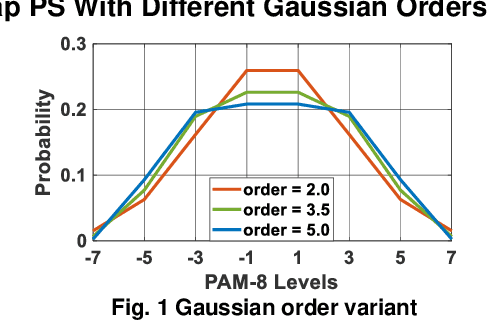
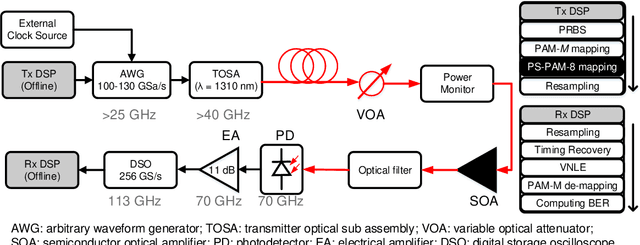
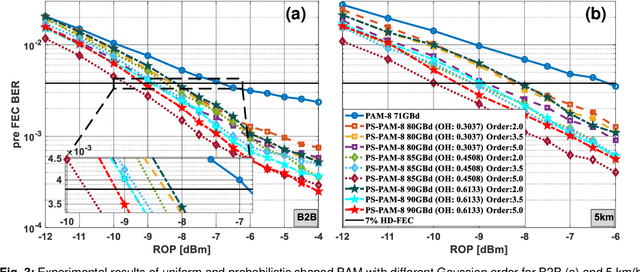
Abstract:For 200Gb/s net rates, cap probabilistic shaped PAM-8 with different Gaussian orders are experimentally compared against uniform PAM-8. In back-to-back and 5km measurements, cap-shaped 85-GBd PAM-8 with Gaussian order of 5 outperforms 71-GBd uniform PAM-8 by up to 2.90dB and 3.80dB in receiver sensitivity, respectively.
Experimental Comparison of Cap and Cup Probabilistically Shaped PAM for O-Band IM/DD Transmission System
May 18, 2022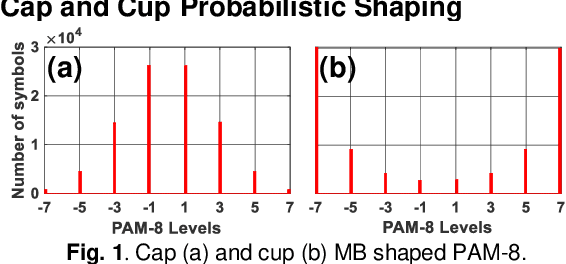

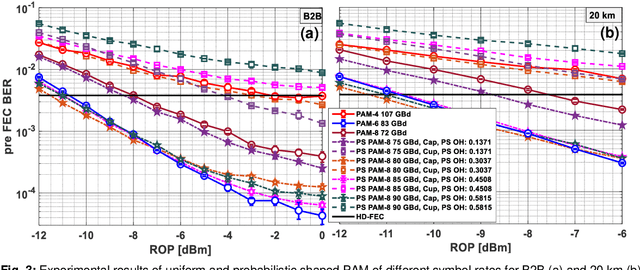
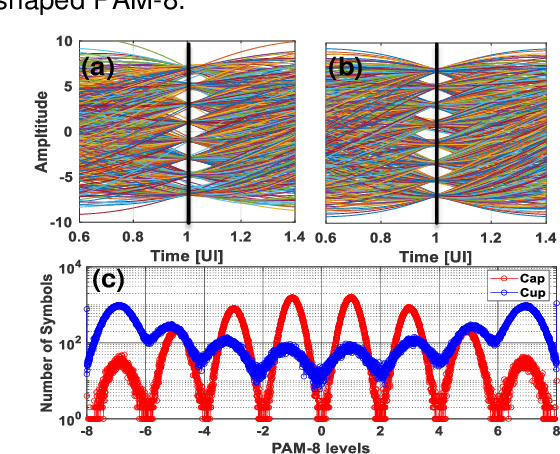
Abstract:For 200Gbit/s net rates, uniform PAM-4, 6 and 8 are experimentally compared against probabilistic shaped PAM-8 cap and cup variants. In back-to-back and 20km measurements, cap shaped 80GBd PAM-8 outperforms 72GBd PAM-8 and 83GBd PAM-6 by up to 3.50dB and 0.8dB in receiver sensitivity, respectively
* Originally published in ECOC-2021. We have updated Figure 3. The change also affects the overall outcome. In contrast to the published version, compared to uniform PAM-8 72 GBd, PS-PAM-8 80 GBd performance is updated to 3.50 dB instead of 5.17 dB, while for PAM-6 83 GBd the gain becomes 0.8 dB instead of 2.17 dB. The changes are adapted in all sections except the experimental setup and DSP section
Comparison of PAM-6 Modulations for Short-Reach Fiber-Optic Links with Intensity Modulation and Direct Detection
May 11, 2022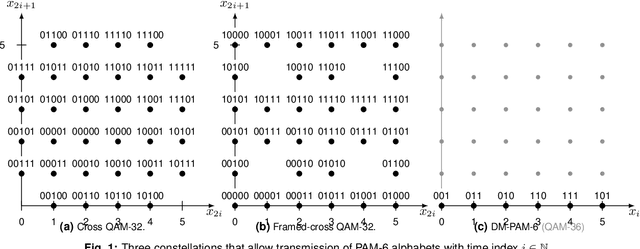

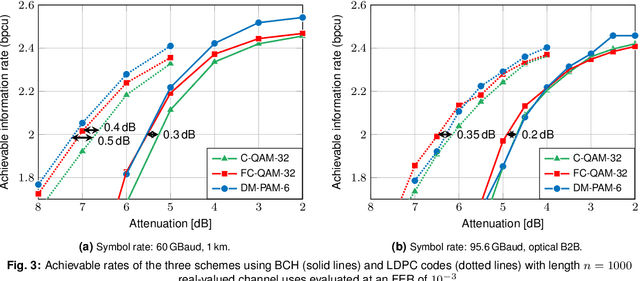
Abstract:PAM-6 transmission is considered for short-reach fiber-optic links with intensity modulation and direct detection. Experiments show that probabilistically-shaped PAM-6 and a framed-cross QAM-32 constellation outperform conventional cross QAM-32 under a peak power constraint.
 Add to Chrome
Add to Chrome Add to Firefox
Add to Firefox Add to Edge
Add to Edge